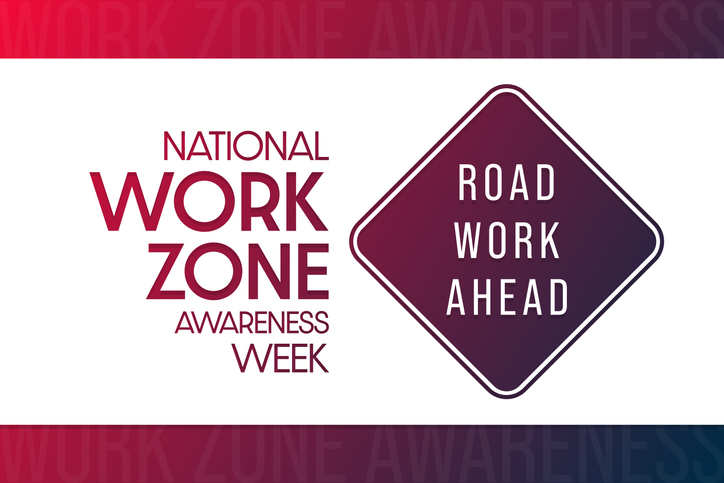It’s National Work Zone Awareness Week, an annual awareness campaign from the U.S. Dept. of Transportation FHWA (Federal Highway Admin.), which strives to educate the public about safety and road construction sites. The 2022 campaign officially began on Monday, and the theme this year is “Work Zones are a Sign to Slow Down.” In the future, AVs (autonomous vehicles) and V2X (vehicle-to-everything) technologies will make work zones—and roadways in general—safer, but in the meantime, human drivers must make the decision to slow down in work zones and choose safety over speed.
Too many people die doing construction, maintenance, or utility work on a road, street, or highway. According to the U.S. CDC and the U.S. BLS (Bureau of Labor Statistics), 2,103 workers lost their lives at road construction sites between 2003 and 2019. Most of these workers were construction laborers, heavy and tractor trailer drivers, construction equipment operators, first-line supervisors of construction and extraction workers, and highway maintenance workers. Estimates suggest the problem of road safety in general has not gotten any better in the past few years, and the FHWA says 170 pedestrians and bicyclists died in work zone crashes in 2020, and 117 highway workers died in road construction site accidents in 2020.
The BLS further details fatalities from the five-year period between 2011 and 2015, which provides some additional insight into how these tragedies occur and, hopefully, how they can be prevented. Of the 609 workers that died in road work zones in the U.S. between 2011 and 2015, about 46% were involved in pedestrian vehicular incidents, which includes being struck by a vehicle or mobile equipment. BLS data suggests workers are most frequently struck by automobiles or dump trucks, and, in most cases, automobiles are moving forward when they strike workers, while dump trucks are moving backward when the accident occurs.
National Work Zone Awareness Week has its beginnings in a local event put on by the VDOT (Virginia Dept. of Transportation) back in 1997. Today, the nationwide campaign aims to raise awareness about the important role motorists play in reducing work zone crashes, injuries, and fatalities. The FHWA suggests the following tips: Plan ahead by looking up the latest traffic conditions on your route and noticing if it includes driving through work zones; minimize distractions while driving through work zones; look out for workers, pedestrians, and bicyclists; don’t speed in work zones and maintain a safe following distance from the vehicle in front of you; drive carefully around large vehicles, including construction vehicles; be prepared to stop suddenly in work zones; and be sure to read and follow signs in work zones.
In 2020, 20% of all fatal work zone crashes involved rear-end collisions, and speed was a contributing factor in about 37% of 2020 fatal work zone crashes, according to the FHWA. For as long as humans are behind the wheel of vehicles and making the decisions that move these vehicles, the safety of roadways and work zones will depend on those humans making the best possible decisions. Education will be critical to increasing motorists’ awareness of their role in work-zone collisions. Unfortunately, accidents will still happen. Autonomous technologies that make decisions about a vehicle’s speed, following distance, starting, and stopping—all based on sensors and the ability the communicate with infrastructure—will be what turns the tide in work zone safety and road safety in general.
Want to tweet about this article? Use hashtags #IoT #sustainability #AI #5G #cloud #edge #digitaltransformation #machinelearning #infrastructure #roadsafety #AVs #autonomousvehicles #constructionzone #workzone#workzonesafety #connectedcars #NWZAW #USDOT #V2X


